WORLD OF INTERIORS 2010
World of Interiors is a performance-installation with people lying on the floor, eyes closed, rather motionless.
The 15 performers are whispering the angry and poetic words of the playwright Rodrigo Garcia. The audience has to approach the performers bodies to understand what they are saying. "World of Interiors" explores the border / relationship between spectators and the piece; it seeks to integrate the audience into the time and space of the performance and to identify the tensions between art and the codes that govern society. In this installation/performance, the spectator can enter and leave the performance space at will. He or she has the liberty to define how long to remain inside, whether to stay with one performer or move on to another one. Each performer has a different collage of texts to say. There is a score for the texts. They are part of a collective partition, with moments of silences, chorus and cannons.
"World of Interiors emerges out of Ana Borralho and João Galante’s unique parcours in the world of performing arts. Over the years the two artists have developed their research into a consistent and mature body of work; always hybrid, it traverses the boundaries of visual and performing arts." in Alkantara Festival 2010 program
Concept, Artistic direction, Light and Set design Ana Borralho & João Galante
Text fragments of the theater writings of Rodrigo Garcia
Translation and dramaturgic collaboration Tiago Rodrigues
Performers (Lisbon-Portugal) Ainhoa Vidal, Alina Bilokon, Antonia Buresi, André Duarte, Célia Jorge, Chris Scherer, Elisabete Fradique, Laurinda Chiungue, Luís Godinho, Maria Manuel Marques, Pedro Frutuoso, Pietro Romani, Renata Portas, Ricardo Barbosa, Rui de Sousa
Artistic consultancy Fernando Ribeiro
Executive production Ana Borralho, Mónica Samões, Miriam Vale
Production casaBranca
Co-production alkantara festival, Museu Colecção Berardo, Útero - Associação Teatral / Espaço Land, CNDC - Centre National de Danse Contemporaine Angers
Artistic residency Centre National de Danse Contemporaine Angers / França
Support Atelier Re.Al, IEFP, Grande Cena, TNT- Manufacture de Chaussures, Bordeaux / França
Thanks Rodrigo Garcia, Mateo Feijó, Carlos Marquerie, Alexia Larrarté, Atelier Re.Al, Pedro Joel, Nec - Núcleo de Experimentação Coreográfica, Margarida Marecos, Walter Lauterer, Flávio Rodrigues, Lara Pires, Ana Margarida Carvalho, Roman Perona, Rui Dâmaso
Support for the presentation in Lisboa Départs, Culture Programme of the European Union
casaBranca is a structure funded by Ministério da Cultura / Direcção-Geral das Artes
video credits from live performance in Lisbon Helena Inverno and Verónica Castro (Volante)
photo credits Vasco Célio
performance duration: 2 hours
Echoes of an anonymous shadow by Fernando L. Ribeiro
ABOUT WORLD OF INTERIORS
Taking its title from an interior decorating magazine, “World of Interiors” turns this reference inside out by suppressing any vestige of a décor that might encourage the autonomy of its users. Human presence is communicated by successive dislocations of body and voice and is passed orally from sender to receiver. Complete understanding requires an interminable de-multiplication of muted words that the receiver perceives as subliminal echoes of his conscience. Just as space is filled with voices that are strange to its bearers – prosthetic and inanimate bodies – our consciousness is put into action through ventriloquism, inherent to citizens who make use of anonymity as a system of camouflage. The fairy-like qualities of verbal discourse do not match the somber neutrality of the body and, in this way, the intensity of the Other voice, interior, that to the exterior world materializes as a suspicious shadow about to be definitively silenced.
Listening/Remembering: World of Interiors by Ana Borralho and João Galante
by Óscar Cornago
The collective word opens an interior and, at the same time, shared space, where intimacy detaches itself from the domain of the individual to recover a common ground. From the title itself, World of Interiors by Ana Borralho and João Galante refers to this world generated through listening. Despite the symbolic importance of vision in Western culture, listening is one of the fundamental senses in a medium like theatre, which is shaped by the spoken word. In this case, listening is intervened upon to become a collective action. This action translates into a soundscape that produces a certain sense of strangeness. The performers — between 10 and 15 — lie on their backs, spread throughout a wide, open room, with their eyes closed, whispering texts by Rodrigo García. At the Escena Contemporánea Festival in Madrid in 2012, the work was performed over the course of two hours. During this time, the audience wandered among the performers lying on the floor, approaching one or another, sitting or lying down, entering into physical contact or remaining distant, observing a landscape in motion.
The spectator’s first impression upon entering the room is one of disorientation. Bodies lying down, a faint murmur in the background whose source cannot be identified, and groups of people who, from a distance, could be mistaken for performers. As described in the work’s presentation at the Matadero Cultural Centre in Madrid:
“In World of Interiors the audience is confronted from the outset with a disturbing image: people lying on the ground, eyes closed, without any evident movement. Apparently, nothing is happening — but this emptiness contains an invitation to proximity, to action. When we approach, we hear whispered texts at the delicate boundary of bodily intimacy. The spectator chooses the mode and duration of listening, the degree of closeness, the way of being present.”
The absence of a fixed point on which to focus the gaze, and the mixture of murmurs over a background of silence, creates a state of dispersion in which the wandering spectator becomes just another element. The work is not merely actors reciting texts — it is the situation that they create, of which the public forms part.
This kind of human installation highlights the sensitive dimension of the very act of listening. We do not only listen to the texts of Rodrigo García — which, depending on where the spectator is positioned, might not even be audible and are sometimes delivered in different languages — but also to those who speak them, how they are spoken, the situation that is formed, and finally, to ourselves in the act of listening. The way the texts are delivered is the key element of the work. They could have been spoken by participants on their knees, facing the wall — as in Purgatory, also by Galante and Borralho — or standing on a table, or simply facing the audience, each of which would have created different situations. The whisper does not summon a crowd — it invites intimacy, a few people. It evokes a space of silence and closeness where the feeling of intimacy is created from the collective.
The fact that the performers have their eyes closed contributes to the sensitive environment gaining autonomy as a space of whispers that come from nowhere and go nowhere — they are simply produced there, in that moment. The origin of the texts, like their content, acts as a distant reference in contrast to the absence of emotion in the diction and the neutral, constant tone, which eliminates psychological dimension. This produces a strange sense of loss of identity that imposes the perception of the bodies as whispering organisms without their own subjectivity, but with a unique texture, vocal tone, and presence. To achieve this diction, the performers receive the texts through headphones. This means that they must concentrate on what they are hearing, rather than on adding emotional color. The interiority referenced by the piece does not reveal the inner life of individual subjects, but of a human landscape that invites a close and immersive sensory perception — one that could be described less as visual than as tactile. As Rodrigo García would later say about the use of the texts: what matters is not what is said, but the situation that is created.
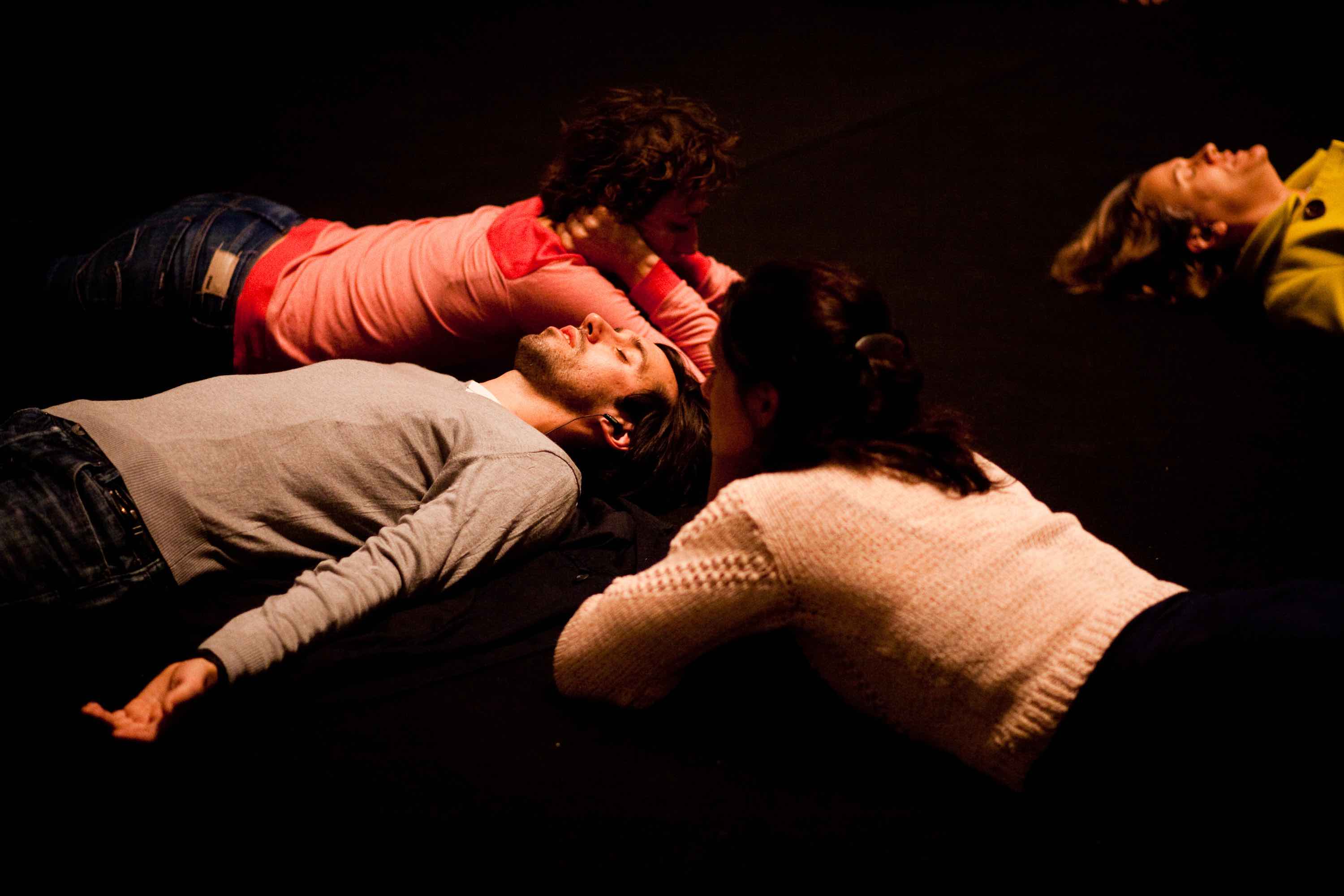
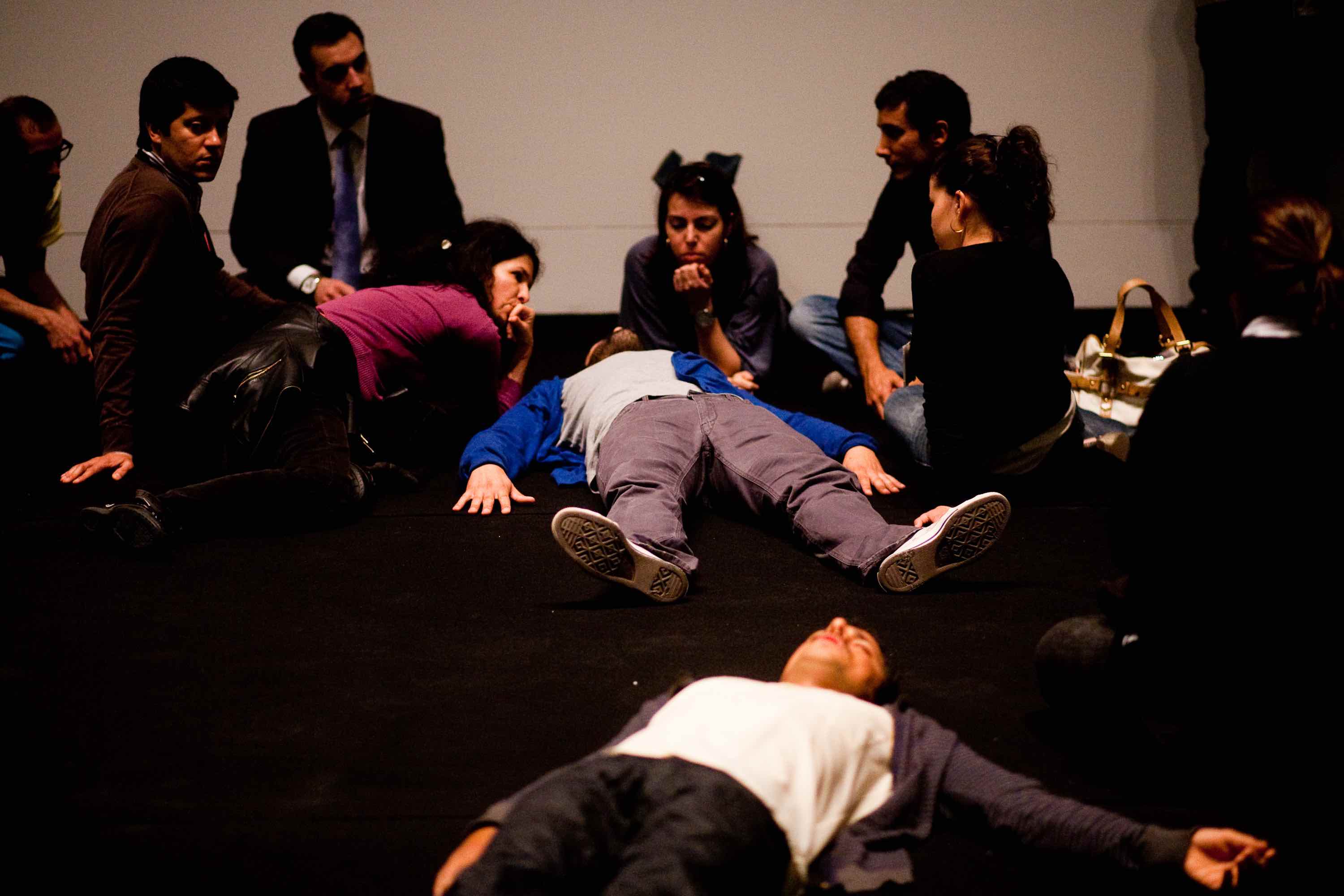
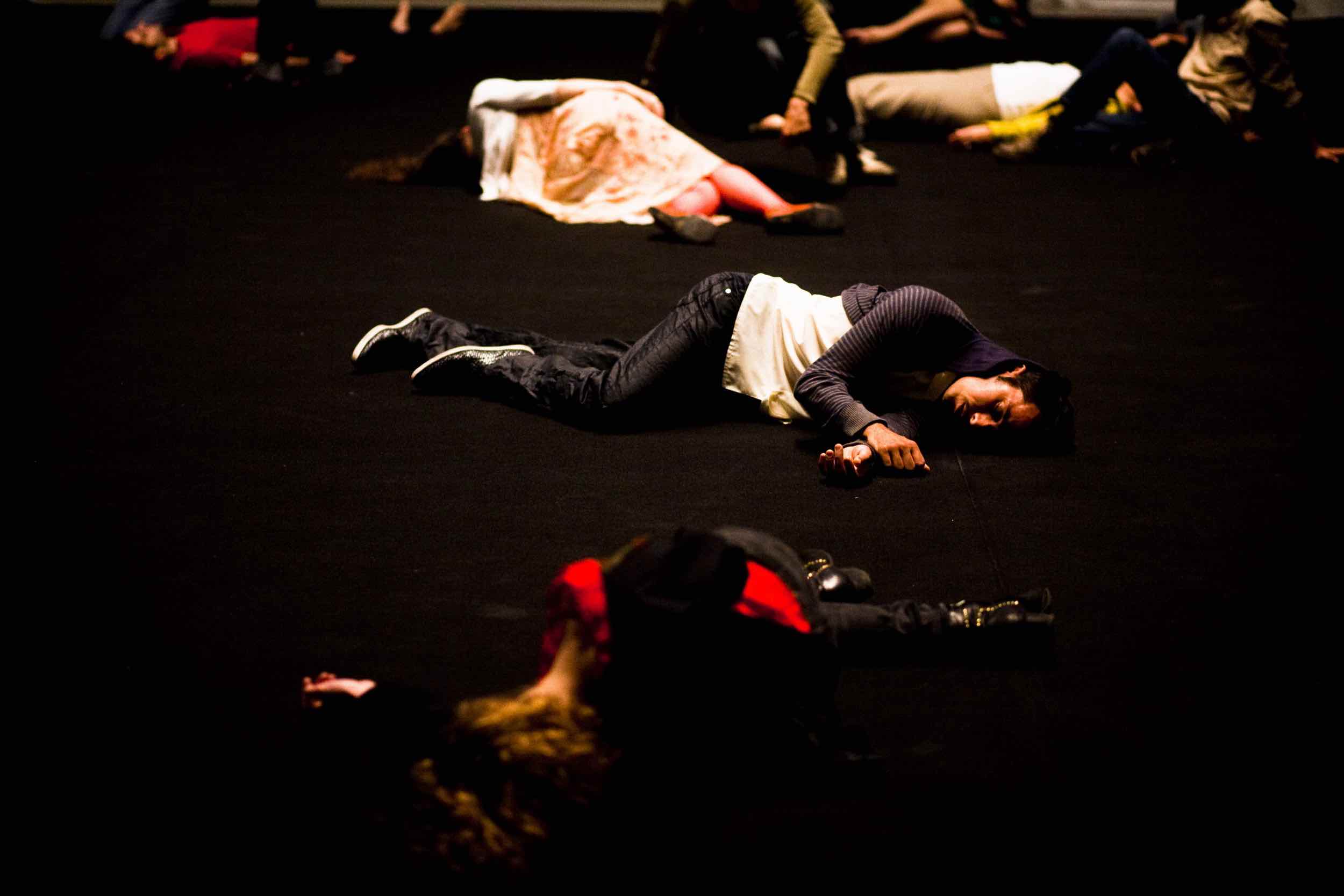
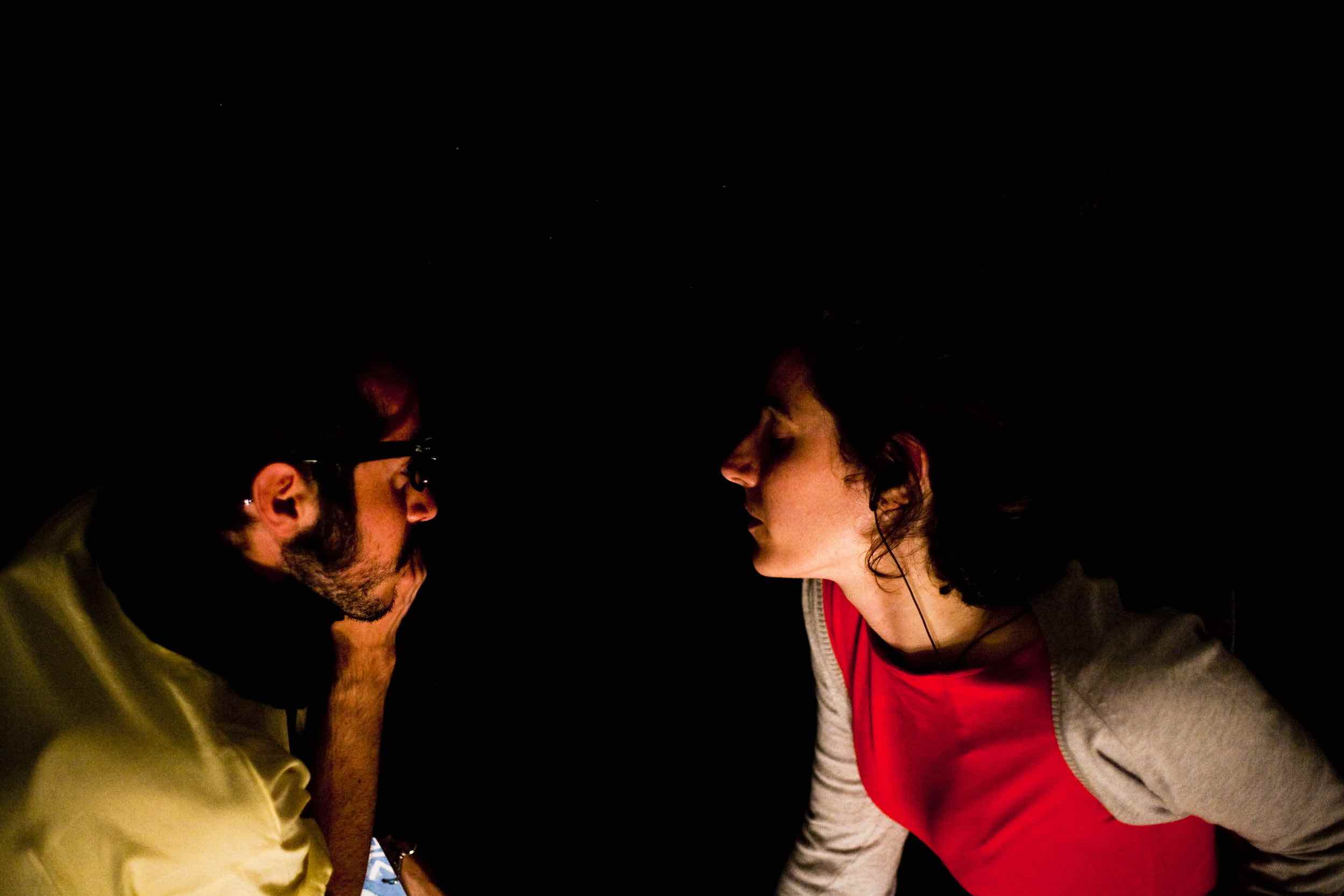
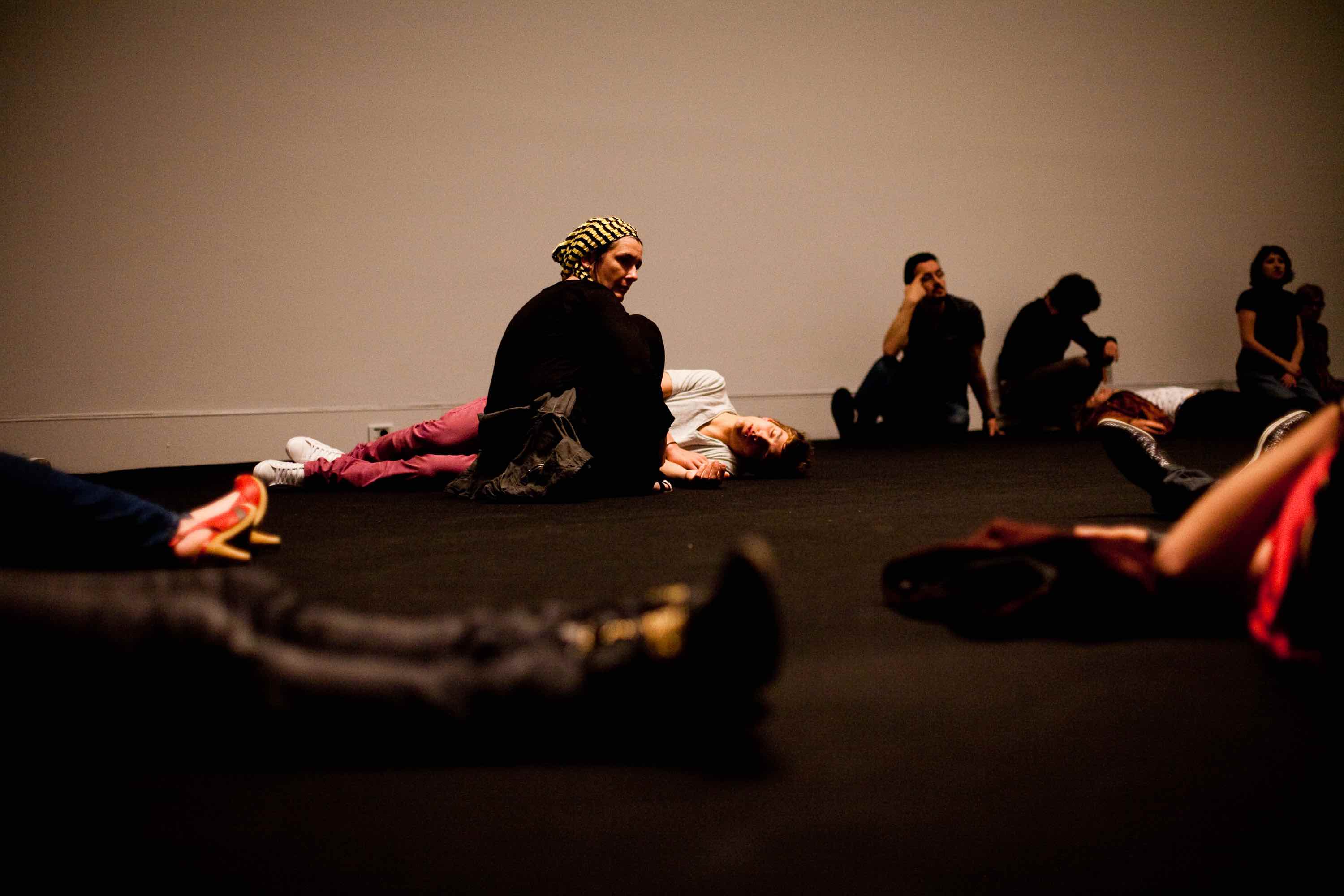
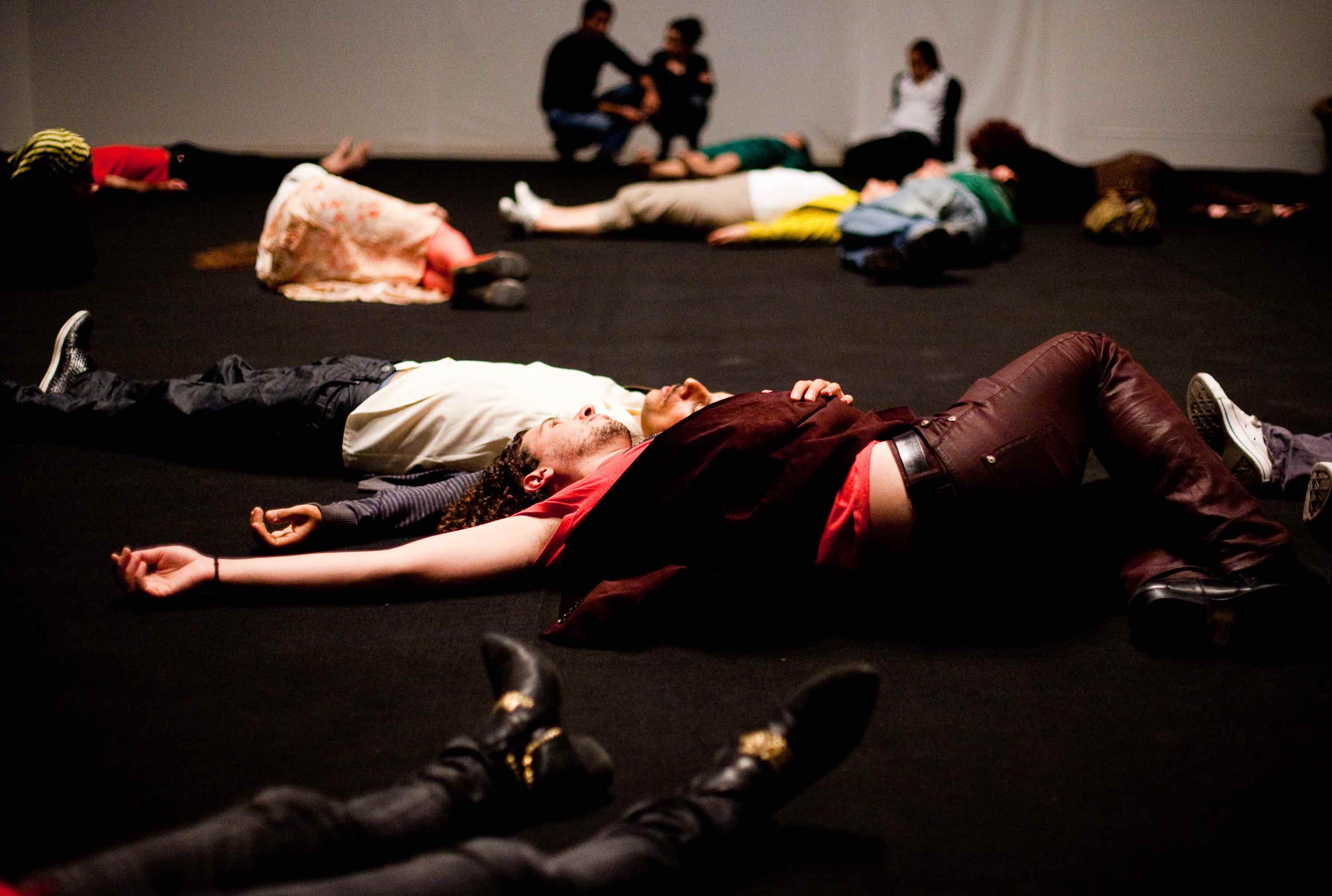
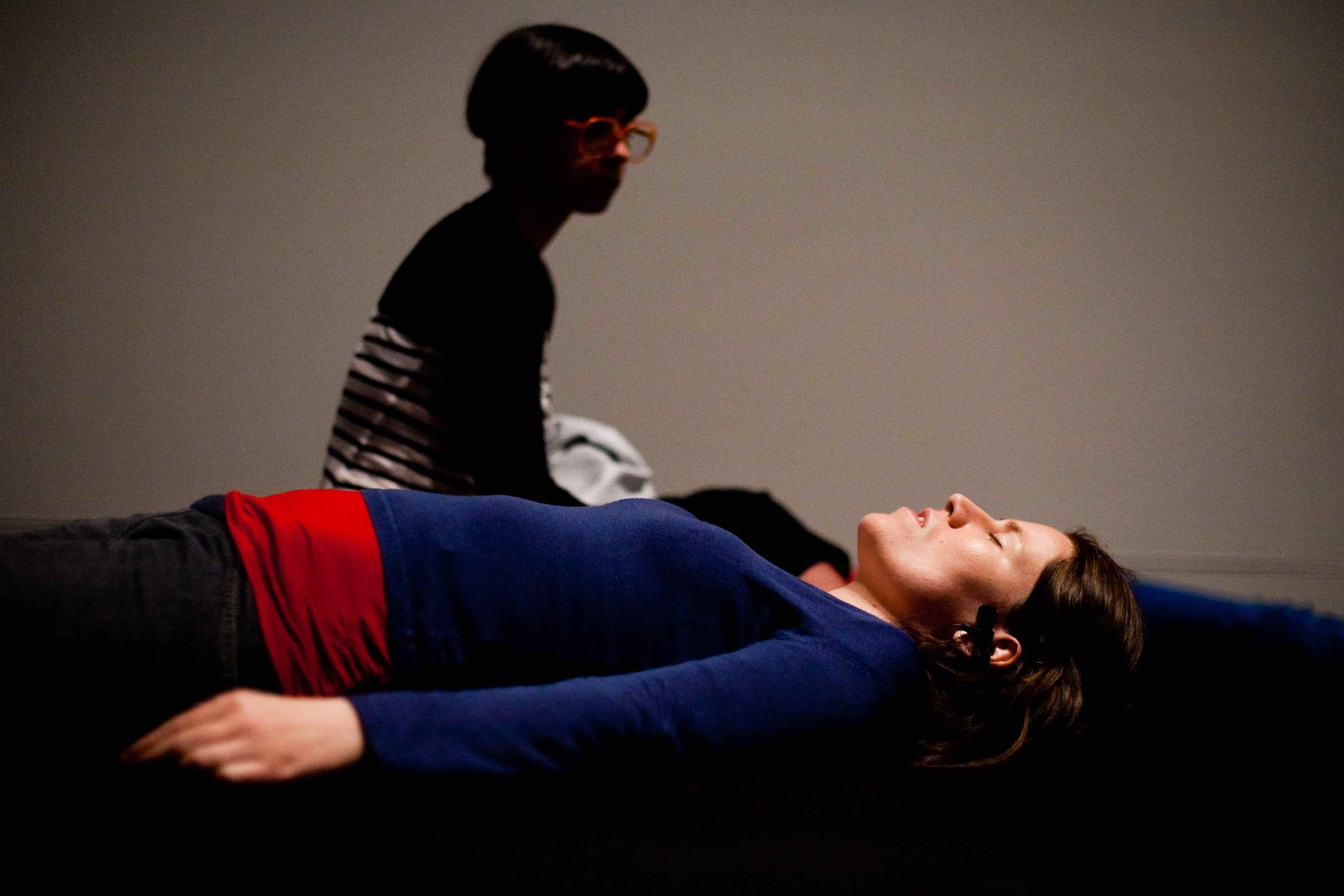
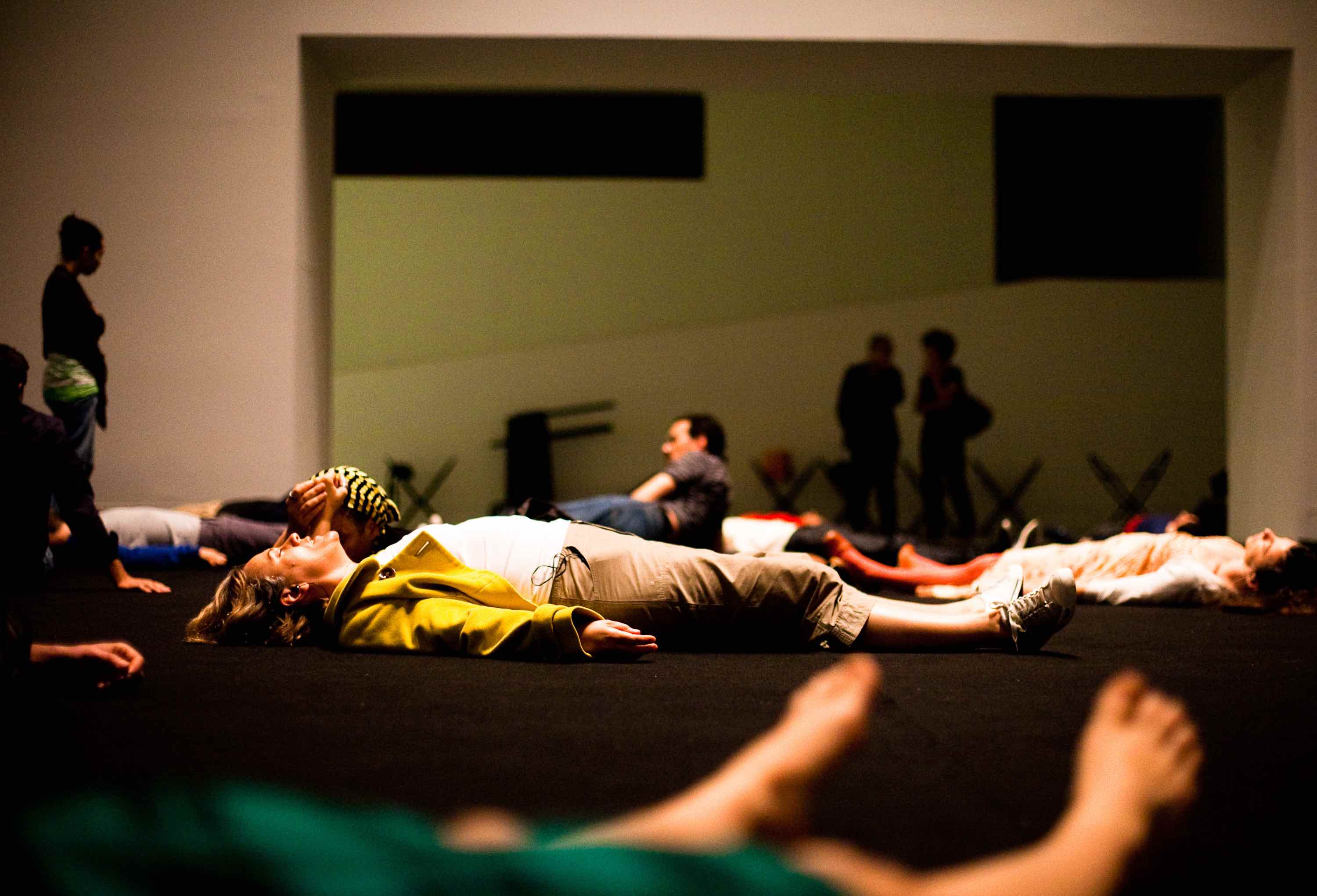
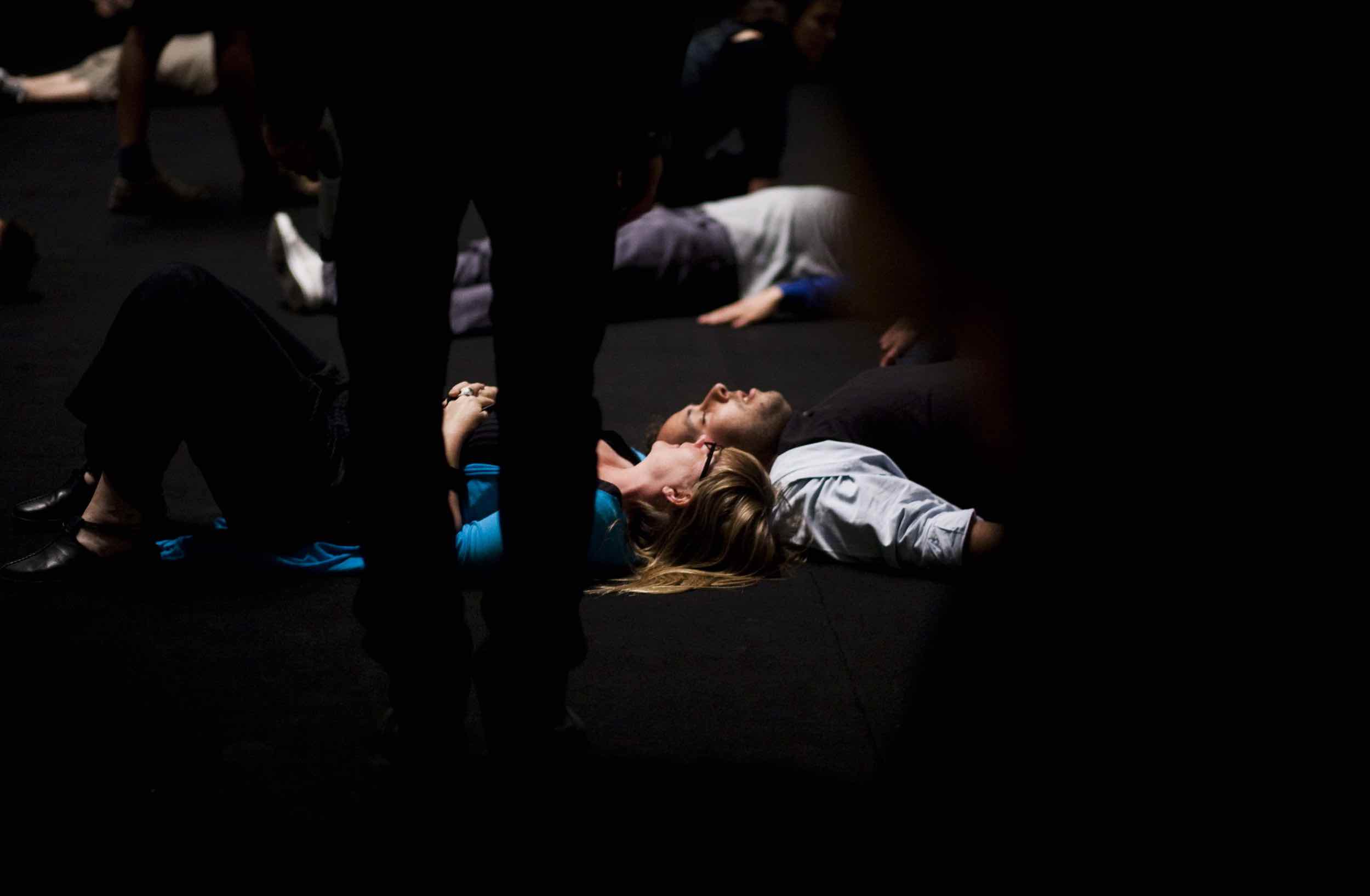
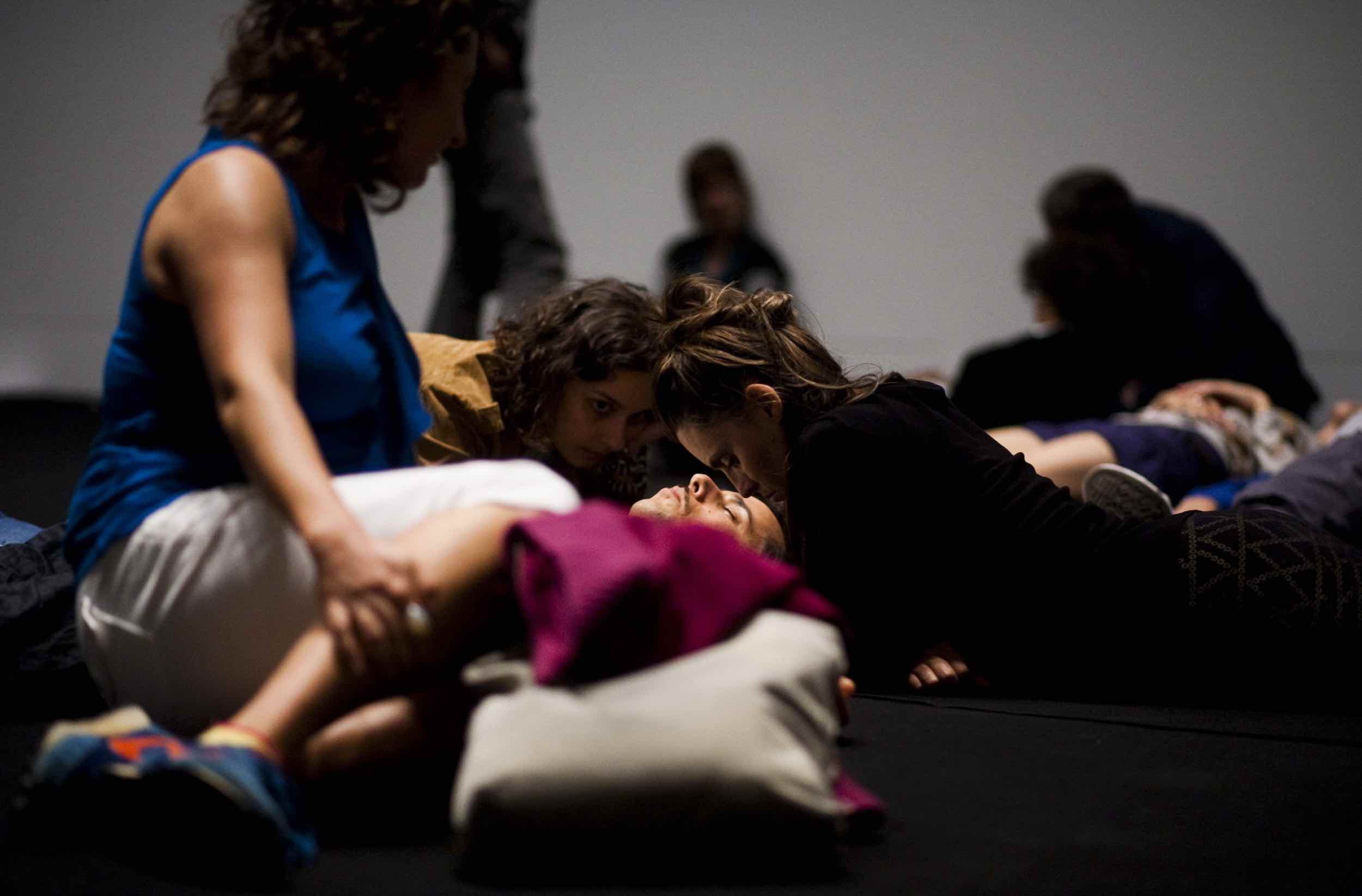
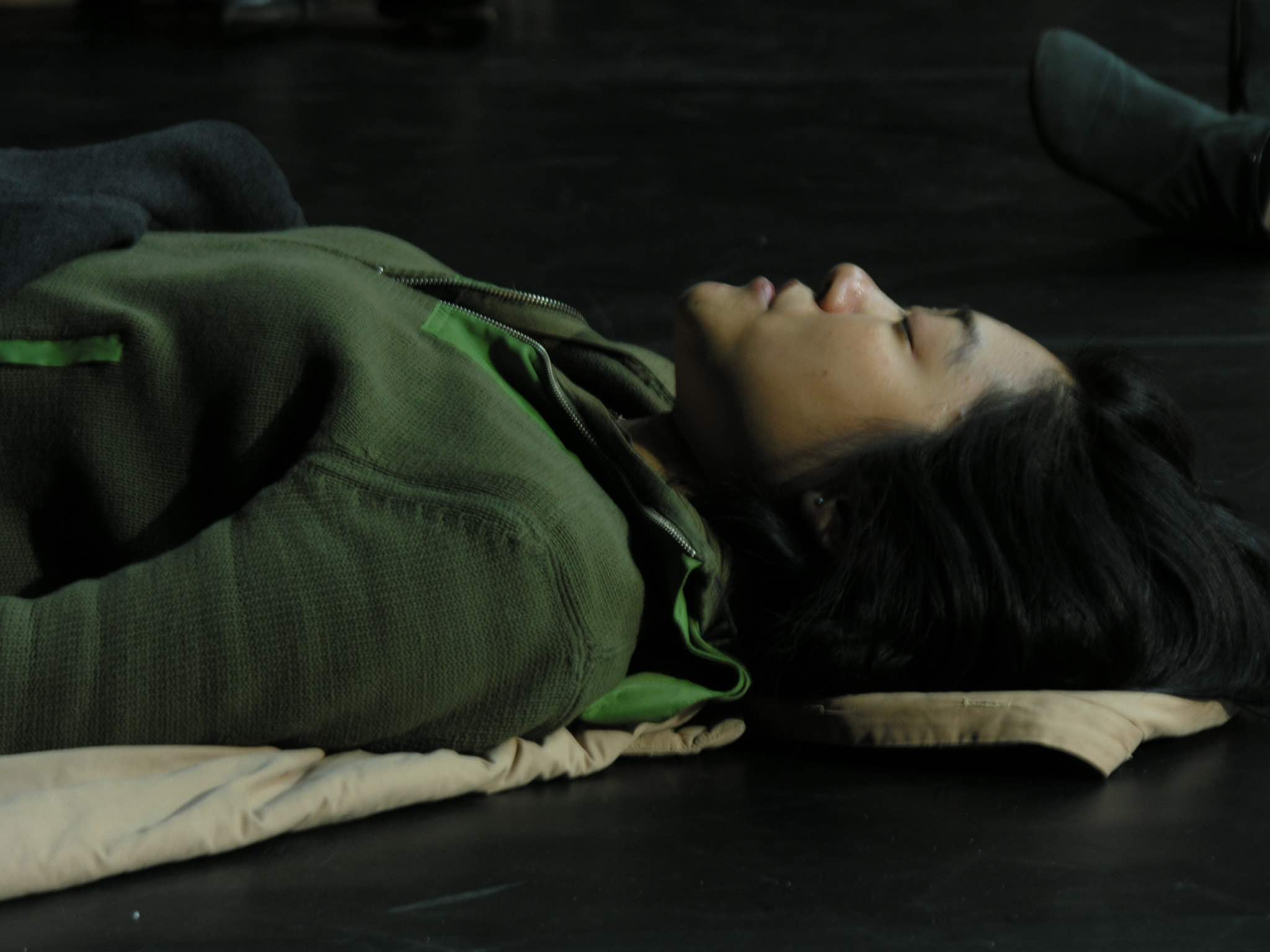
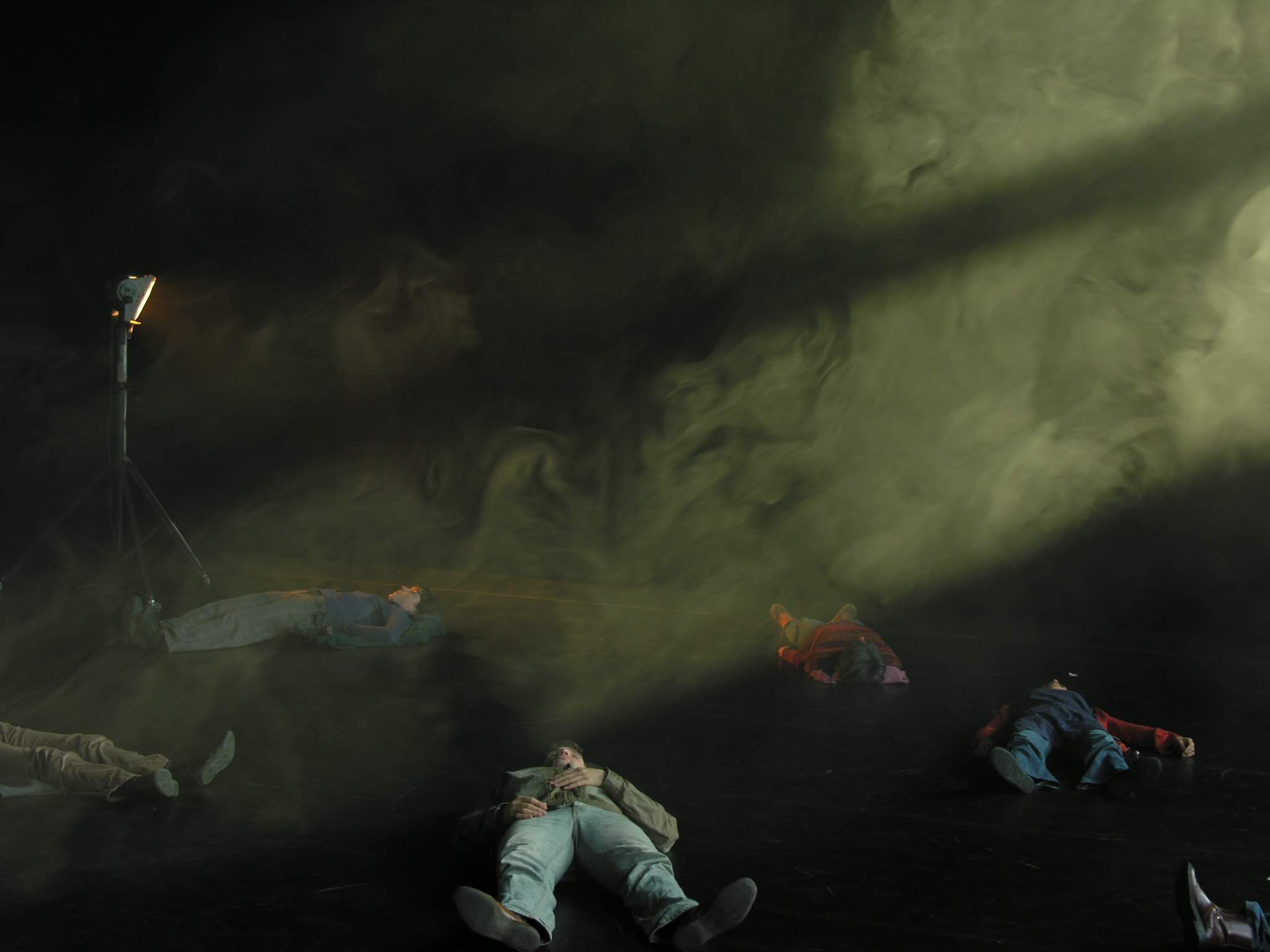
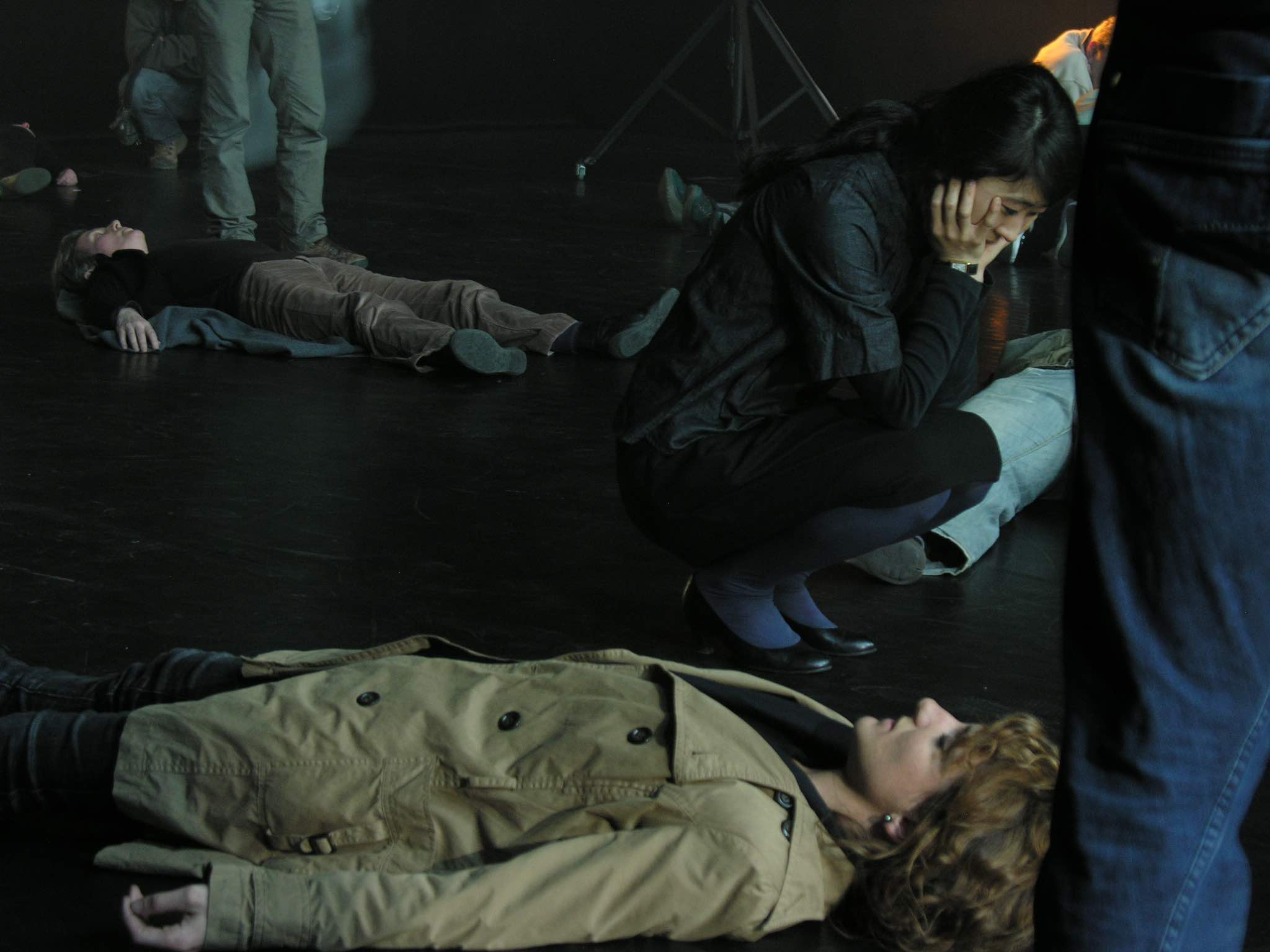
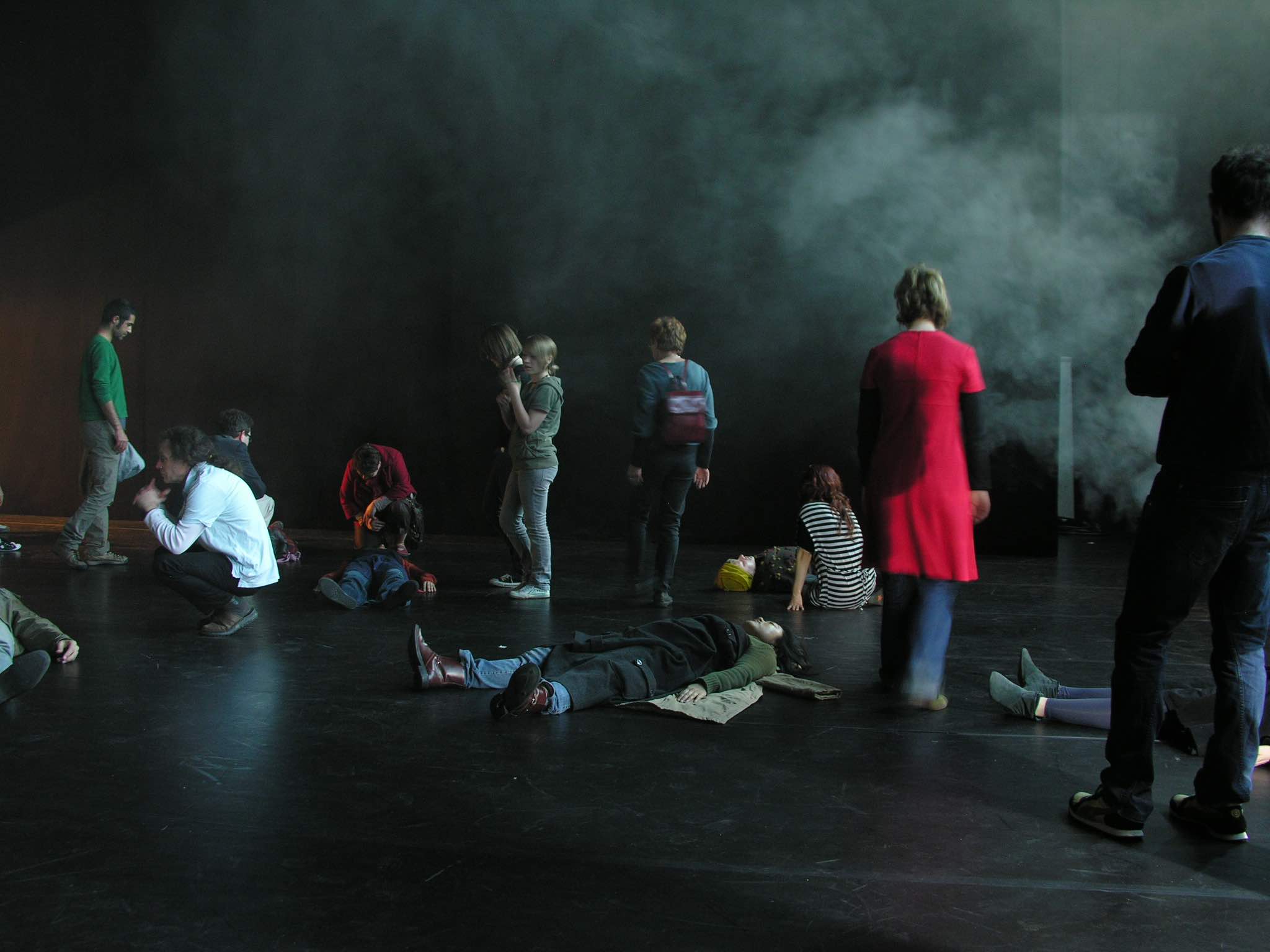
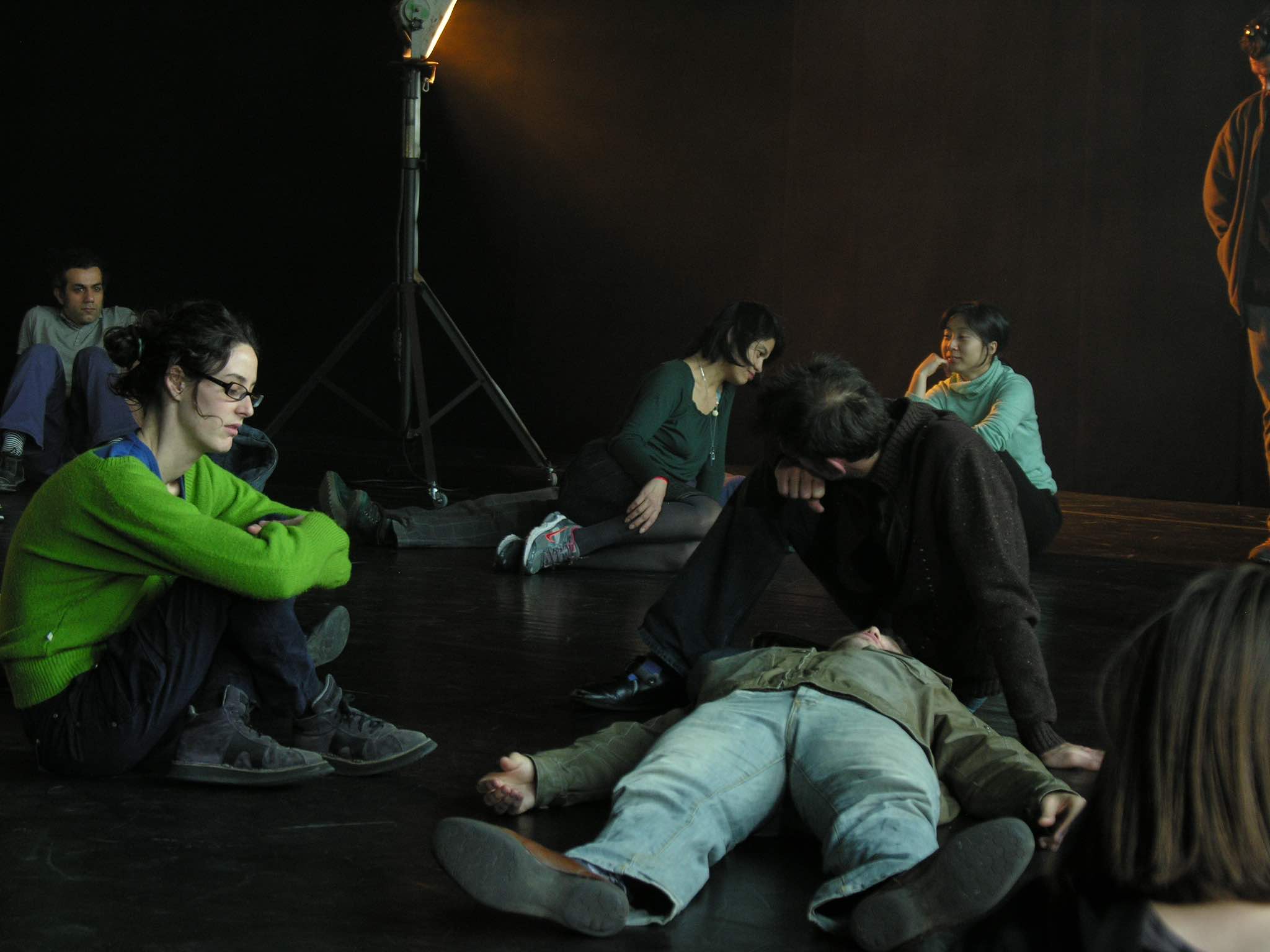
;)